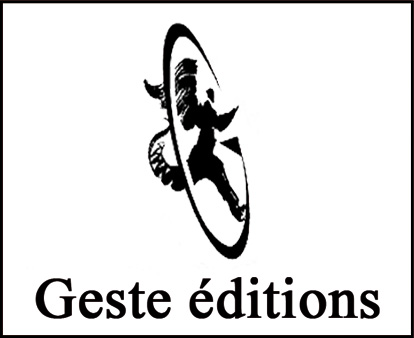Scripta Maneant: contact et modalités de dépôt d'un manuscrit
Contact
Site Web
https://www.scriptamaneant.com/Adresse
Via dell’Arcoveggio, 74/2, 40129 Bologna ItalieMaisons d'éditions similaires :
PU Saint-Etienne
Indigo & Côté femmes
Les Objectifs des éditions INDIGO & Côté-femmes :
Promouvoir l'écriture des femmes du passé et du présent en faisant découvrir des textes anciens non réédités, essentiellement écrits par des femmes et sur les femmes, et de textes traitant des rapports entre les sexes, le genre et sa naturalisation tout au long de l'histoire.
Proposer des éditions en langues française, espagnole et bilingue (français/espagnol).
Favre
Atelier galerie éditions
ateliergaleriéditions ne se contente pas d’éditer, elle accompagne les auteurs et propose des mises en pages qui sauront mettre en valeur l’ouvrage tout en captivant le lecteur.
Nous réalisons également des livres d’artistes, numérotés, signés, fait d’une manière artisanale, entièrement à la main, diffusés par des galeries, des salons ou chez les plasticiens eux-mêmes, là où les collectionneurs et les bibliophiles recherchent une signature, une estampe ou des éditions limitées d’ouvrages.
Une œuvre d’art originale ne veut pas forcément dire œuvre unique : la sculpture, l’estampe, la photographie, éditée, tirée à plusieurs exemplaires reste une œuvre originale.
C’est sous le contrôle de l’artiste que vont être travaillées et éditées les estampes numériques en tirage limité, numérotées et signées. Celles-ci sont réalisées avec des encres pigmentées haute résistance, sur papier sans acide pour une meilleure conservation dans le temps.
La Découverte

Geste éditions
Rocher (Editions du)
Actes Sud
Droz
Telle fut la notice qui figura longtemps en tête des catalogues de la maison d'édition.
II fallait de l'intelligence, du cran et du caractère à une femme pour fonder et diriger une maison d'édition dans le Paris des années folles. C'est en décembre 1924 exactement que la neuchâteloise Eugénie Droz, alors âgée de trente et un ans, publia ses premiers livres, avec pour adresse le 13 avenue Félix-Faure, dans le XVe arrondissement, son adresse personnelle.
Ce fut bientôt l'inévitable VIe et le 25 rue de Tournon, dans cette maison donnée par un roi à un poète.
L'érudite demoiselle resta à Paris jusqu'en 1947, date de son installation au 8 de la rue Verdaine à Genève.
Dès l'origine l'ancrage genevois de la maison était inscrit, sinon dans les astres, du moins sur la page de tous les titres, puisqu'Eugénie Droz avait choisi comme marque celle de l'imprimeur Jean de Stalle, actif à Genève de 1487 à 1493, et dont le troisième et vraisemblablement dernier livre, un Ars minor de Donat édité par Antonio Mancinelli, qu'il imprime le 15 mai 1493, fut le seul à porter la marque aux quatre putti tenant son propre monogramme.La seule modification qu'osa l'éditrice moderne fut de remplacer les initiales I.S. par les siennes.
Plus tard, elle voulut que son affaire restât genevoise et, en 1963, c'est à deux jeunes historiens aux intérêts complémentaires, Giovanni Busino et Alain Dufour, qu'elle céda la société. Ils perpétuèrent l'audience scientifique de la maison. En 1966 eut lieu le dernier déménagement; le 11, rue Firmin-Massot étant depuis l'adresse de la Librairie Droz S.A.
Depuis 1995, une troisième génération a pris la relève et Max Engammare dirige les destinées de la Librairie Droz.